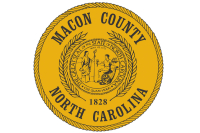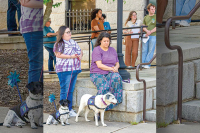Bryson weighs regulations to protect character
Bryson City leaders will turn to residents to help solve their own disagreements over the severity of proposed appearance standards for new development downtown.
Town leaders will host a public hearing on the ordinance, which would stipulate aesthetic standards such as architecture, building materials and landscaping, for the town. A majority of the regulations, however, apply only to the downtown area.
Bryson City does not have any guidelines for new commercial or residential buildings downtown — it’s anything goes right now. But the town began looking at adopting some standards after a building that clashed with the town’s quaint appearance served as a wake-up call.
The planning board spent three years drafting proposed regulations, but when they were presented to the town aldermen, they didn’t get a particularly warm welcome. Mayor Brad Walker believes the public does want them, however.
“There are a lot of people fighting for this,” Walker said. “I haven’t heard any negativity (about the standards) except from the board.”
The board of alderman, which have final say over whether the ordinance is passed, decided to hold a hearing to gauge public sentiment.
Related Items
Alderman Jim Gribble said that the town does need some standards but described the proposed guidelines as “pretty restrictive” and “over and above what I would desire.”
Aldermen Kate Welch and Tom Reidmiller declined to comment on the standards until after the public hearing. Alderman Stephanie Treadway did not return calls for comment.
People began lobbying for some official appearance or building standards, in part, because of a tan metal structure erected on Main Street in 2006.
“We don’t have that much land anymore, and we have to take care of our land,” said Walker.
At the time, residents and business owners expressed their dislike for the building, saying it clashed with the character of Bryson City’s historic downtown.
But, landowner Tom Hurley was well within his right to build it, Walker said.
“We didn’t have any ordinances to stop that,” he said. “We decided that we didn’t want that to happen anymore.”
For a while, local shopkeepers and the Chamber of Commerce have worried that new businesses would not fall in line with the unofficial standards of the town, said Karen Proctor Wilmot, executive director of the Swain County Chamber of Commerce.
“We do feel that it is important” to have standards in place, she said. “The code was kind of designed around what the town already looks like.”
The town’s Main Street is characterized by its brick façades and small local shops. Without any regulations, property owners could install large, obtrusive signs or paint their buildings neon green.
“It’s probably a good thing to have some sort of codes to regulate,” said Town Manager Larry Callicutt. The standards are “not real restrictive,” he said.
The planning board has worked on the land use regulations for about three years.
The standards are similar to those of other town’s, Walker said.
“We didn’t want to reinvent the wheel,” he said.
Town leaders are waiting to hear feedback from residents and business owners before making any possible changes.
“They should be the ones having most of the input,” Callicutt said, adding that there is nothing in the ordinance that would prevent the town from passing some version of it.
Want to weigh in?
What: Public hearing about proposed Bryson City land use standards
When: Nov. 21 at 6 p.m.
Where: Swain County administration building.
What the proposed standards say
Although most town leaders agree Bryson City needs guidelines to regulate the appearance of new commercial development, they cannot agree on whether the proposed standards are too strict.
Here are some highlights of the 27-page draft under consideration:
• Builders are prohibited from using synthetic stucco, preformed metal siding, vinyl siding, artificial brick and exposed or painted concrete blocks.
• At least 75 percent of a storefront’s façade should be glass windows and/or door. The windows must be at least 10 feet tall and no more than three feet above the sidewalk.
• A building’s main entrance should face the adjacent street.
• Sidewalks shall have an at least five foot “clear zone.” Light poles, bicycle parking, trash cans, plants and benches are permitted between the clear zone and the curb.
• Mobile homes or trailer parks are not permitted in the central business district, but public institutions and commercial or industrial businesses may be allowed in the area pending review by the board of alderman.
• Buildings in the central business district may have a front porch, stoop or awning with a minimum depth of eight feet, a balcony with a minimum depth of six feet or a bay window with a minimum depth of four feet.









